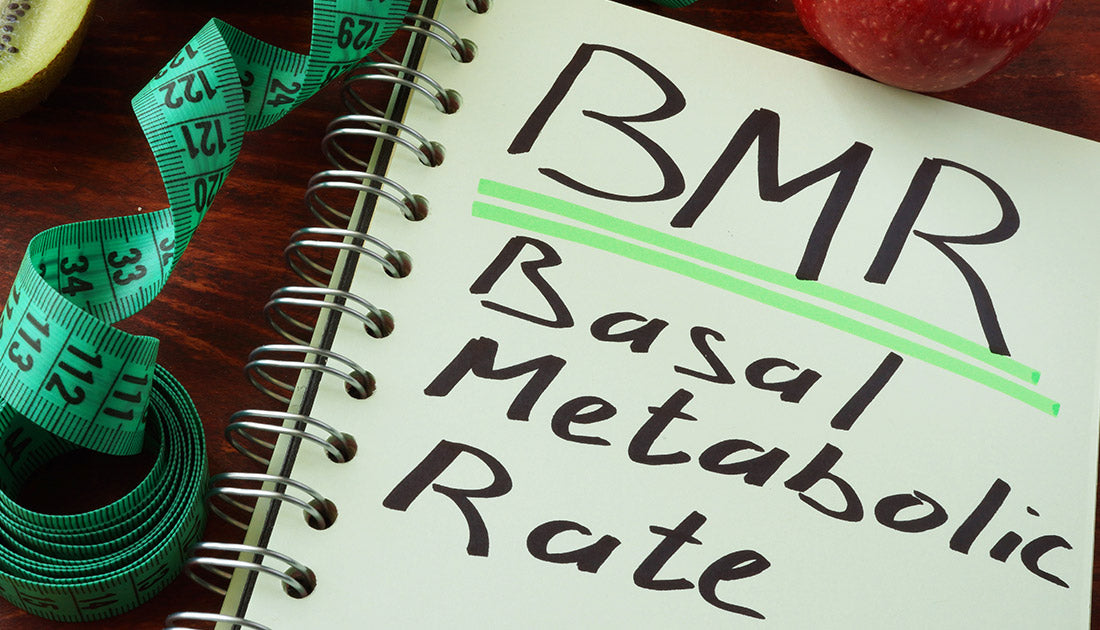Weight loss ultimately boils down to managing calories in versus calories out.
To lose weight (fat), you must consume fewer calories than you burn in a given day. Furthermore, the only way to know with reasonable certainty whether you are consuming the right amount of calories to lose weight is to track your nutrition.
To know how many calories to eat for weight loss, many individuals turn to one of the countless available (and FREE) calorie calculators on the internet.
Now, it should be mentioned that these calculators merely provide an estimate for how many calories you should eat each day to lose weight, and you’ll ultimately need to dial in the exact amount of calories for YOUR body. Still, it’s a starting point.
So, when deciding how many calories you should eat to lose weight, you’ll come across several different numbers, but two of the most prominent ones are the acronyms -- BMR and TDEE.
What are BMR and TDEE, and which one is best for weight loss?
Let’s find out!
What Is BMR?
BMR stands for "basal metabolic rate," It is one component that affects how many calories your body burns in a day.
Basal metabolic rate accounts for the number of calories your body burns at rest (e.g., you did nothing all day but lay in bed binging the latest nonsense on Netflix). It will vary from one individual to the next as BMR is determined by:
- Gender
- Age
- Weight
- Height
- Activity
- Body Fat
Essentially, BMR is the amount of energy your body needs to "keep the lights" on. It's the amount of energy required to keep your brain, heart, liver, and other essential life functions going to ensure you live to fight another day.
Frequently, you'll see the acronyms BMR, and RMR (resting metabolic rate) used interchangeably. While they are similar, they aren't the same thing, FYI.
Technically, resting metabolic rate includes your basal metabolic rate and the calories burned during the digestion process and movements that don't involve formal activities (i.e., exercise).
What this means is that your resting metabolic rate RMR will always be slightly higher than your BMR.
What Is TDEE?
TDEE stands for total daily energy expenditure, and it represents the total number of calories your body burns in a day. One easy way to estimate TDEE is to multiply your BMR by 1.2-1.9 based on your activity level.
TDEE is comprised of four main components:
- BMR (basal metabolic rate, which we already discussed above)
- TEF
- TEA
- NEAT
What in the world do these other acronyms mean?
TEF
TEF stands for Thermic Effect of Food.
TEF represents the number of calories your body burns digesting, absorbing, and utilizing the protein, carbohydrates, and fat you eat into amino acids, sugars, and fatty acids that your body can use to generate energy (ATP), repair damaged muscle tissue, synthesize hormones, and support your immune system.
The composition of your diet (i.e., how much of each macronutrient you eat) will determine how large/small your TEF is. Research notes that TEF can account for up to 10% of TDEE, which isn't all that much in the grand scheme of things. Still, when you're dieting for fat loss, every little bit helps (which is one of the reasons high-protein diets support weight loss -- your body uses more energy digesting protein than either carbohydrates or fat).
TEA
TEA stands for Thermic Effect of Activity.
TEA represents the number of calories your body burns during structured physical activity (i.e., exercise).
TEA can vary substantially from one person to the next or even from one day to the next, depending on the type of workout and how long it is or how intense it is.
NEAT
The final component of your TDEE is non-exercise activity thermogenesis (NEAT).
NEAT represents the number of calories burned each day through movement not classified as organized activity (i.e., exercise). Activities that count towards NEAT include (but aren't limited to): taking the stairs instead of the escalator or elevator, fidgeting, tapping your food, getting the mail, etc.
Similar to the number of calories you burn during exercise, NEAT will also vary substantially from one individual to the next and from one day to the next.
NEAT can also play a significant role in how high or how low your TDEE is. Individuals with more physically active jobs will have a much higher NEAT than someone who works sitting at a desk for hours and hours each day.
Using BMR and TDEE to Lose Weight
As we mentioned at the outset of this article, losing weight successfully is about managing your calorie intake versus your energy expenditure.
So long as you eat less calories than you burn each day, you will lose weight.
This begets the question, which number should you use -- BMR or TDEE.
Well, BMR is the daily sum of all the energy your body uses to stay alive -- keep your brain functioning, pump blood to your organs, breathing, etc. It does NOT include calories from activities during the day -- digestion, brushing your teeth, rubbing your eye, cooking breakfast, lifting weights, etc.
In other words, BMR is the actual number of calories you need to consume to ensure basic functionality and survival. As such, that is not the number of calories you should eat each day to lose weight.
BMR is the "baseline," and from that, we can estimate TDEE -- the number of calories you burn each day, including those from exercise, regular daily chores, and digesting food.
If you eat approximately the same number of calories you burn each day; you'll maintain your weight.
Essentially, you can think of TDEE as your maintenance calories.
Therefore, to lose weight, you will need to eat less than your TDEE.
How much “less” than your TDEE do you need to eat to lose weight, though?
A good rule of thumb is to take your TDEE and subtract 15-20% from it. This new number will be your “weight loss calorie intake.”
For example, let’s say that your TDEE is 2500 calories.
To find your weight loss calorie intake, multiply 2500 by 0.85 (85%).
This gives: 2500 * 0.85 = 2125 calories
Next, you will want to divvy your weight loss calories into individual macronutrient intakes (protein, carbohydrates, and fat)
Begin by setting protein at roughly 1 gram of protein per pound of bodyweight.
Next, subtract protein calories from your weight loss calories (1 gram of protein = 4 calories)
After the protein is set, you will establish your fat intake at 0.3–0.5 grams of fat per pound of bodyweight (where you choose to set your fat is highly individual and depends on whether you enjoy eating a higher fat diet or a lower fat one).
Next, subtract fat calories from your remaining weight loss calories (1 gram of fat = 9 calories)
Your remaining calories (after subtracting protein and fat calories) are directed towards carbohydrates.
Consistently follow this calorie intake and macronutrient breakdown for two weeks to see if you’re actually in a calorie deficit (because remember, calorie calculators merely provide an estimate of your TDEE, very rarely -- if ever -- are they spot-on accurate).
If you’re not losing weight, subtract another 250 calories from your diet (or adding a few cardio sessions into your weekly exercise regimen) and assess what changes may occur.
If you're losing more than 1% of your body weight per week, you may need to increase your calorie intake slightly (100-200 calories). The reason for this is that losing too much weight too fast can lead to muscle loss.
Takeaway
BMR and TDEE are two common acronyms you'll see when trying to lose weight, and they each have their place. BMR is a component of your TDEE, but it is NOT the amount of calories you should eat to lose weight. BMR is the amount of calories your body needs to "keep the lights on" and ensure you live to fight another day.
To lose weight, you need to eat about 15-20% less than your TDEE. This can be accomplished through a combination of increased physical activity and reduced calorie intake.
The most effective way to track whether you are eating in accordance with your fitness and physique goals is to track your daily food intake using one of the many readily available fitness apps.
And, for added diet and weight loss support, make sure to check out our comprehensive line of top-rated weight loss support supplements, including Shredded Steel®, Steel Slim®, and Steel Core®.

